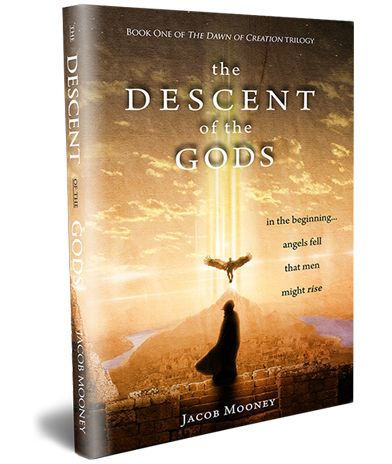
Ken Ham, an advocate of a literal reading of the early chapters of Genesis, finally shared his thoughts on the Nephilim mystery. Were they the offspring of angels and human women?
Born on October 20, 1951, Ken Ham is an Australian Christian fundamentalist, young Earth creationist, apologist, and former science teacher. He now resides in the United States and serves as the founder, CEO, and former president of Answers in Genesis (AiG), a Christian apologetics organization that oversees the Creation Museum and the Ark Encounter.
Ken Ham’s theological journey is rooted in his firm belief in that the biblical account of history is true and his conviction that the creation account in the Book of Genesis is not merely allegorical or mythological, but historical fact.
However, with regard to the question of the identity of the ‘sons of God’ and the nephilim, Answers in Genesis doesn’t take a particular stance regarding the interpretation of Genesis 6:1-4.
This approach is understandable, since the controversy of the nephilim invites many to a lot of speculation, whereas Answers in Genesis seeks to provide the church with ‘answers’ and not increased confusion.
However, Ken Ham has recently made it more clear which interpretation he prefers, and so we can dig into that here.
Ken Ham’s Stance on the ‘sons of God’ in Genesis 6:1-4
He understandably begins with a disclaimer of sorts:
I’m sure this blog post will get me into “trouble.” I find this is a very emotional issue for some people and that often some Christians’ views of eschatology and Genesis 6 are intricately intertwined. I find there are certain topics where people passionately (sometimes aggressively) respond, and no doubt this will be one of them. But all of us need our thinking to be challenged.
So, I swallow hard, and here goes—let’s talk about the Nephilim! I’ve been asked about my views many times, so I have decided to give them. Of course, sometimes people ask for my views on something, so I give my view to them, and then they get upset with me.
Ken Ham Answers “Who Were the Nephilim?”
And then he proceeds to unpack his views.
The crux of Ham’s argument lies in the belief that the intermarriage between the godly line of Seth and the ungodly lineage of Cain led to the rise of the Nephilim, who were possibly larger than average in height.
He contends that this mingling of spiritual light and darkness triggered an escalation of ungodliness. Consequently, God’s judgment fell upon them, culminating in their destruction during the flood.
“It seems to me the simplest explanation is that the line of Seth (which could have been referred to as “sons of God” because they were godly and called upon the name of the Lord) started marrying the line of Cain (the “daughters of men”—women who were beautiful but ungodly). Such mixing of spiritual light and darkness destroys families.”
…
Who were the Nephilim? Certainly, the description may imply that they were of great stature (perhaps giants in the build of their bodies), greatly feared, and were well-known, presumably for extreme wickedness. Perhaps they were certain individuals of the offspring resulting from this mixing of “the sons of God” and the “daughters of man” who became extremely evil.
Ken Ham Answers “Who Were the Nephilim?”
Ham’s perspective drives his assertion that the Nephilim may have been larger than average humans who were remembered, at least in part for their wickedness and indeed resulted from the union of the line of Seth and the line of Cain.
Objections and More Opportunities for Discussion
However, Ham’s interpretation is not without its detractors. Writer and researcher Ken Ammi raises thought-provoking challenges to Ham’s views in his article “The Nephilim: A Critical Examination of Ken Ham’s View.“
Some of Ammi’s thoughts are summarized below.
One of the key objections to Ham’s view is the Sethite theory, which he embraces. This theory posits that the “sons of God” in Genesis 6 were the godly descendants of Seth, while the “daughters of men” were the ungodly descendants of Cain. According to Ham, this mingling of the godly and ungodly lines led to the rise of the Nephilim, who were possibly distinguished by their great stature and wickedness.
However, the Sethite view faces several challenges. Firstly, it is a relatively late interpretation in the history of biblical exegesis (see our chronological database of nephilim sources through history), and some argue that it introduces more problems than it solves. The idea that Sethites were entirely godly and Cainites wholly ungodly is based on a somewhat mythical characterization of the two groups.
Ken Ham suggests that the context of Genesis 6:1–4 is to demonstrate the extent of wickedness on Earth. He draws parallels with other biblical passages that warn against unequally yoking with unbelievers, such as Deuteronomy 7:1–4 and 1 Kings 11:2, and implies that this concept relates to the godly Sethites intermarrying with the ungodly Cainites.
Critics, however, point out that these passages Ham cites are from millennia after the Genesis 6 event, making it a somewhat anachronistic interpretation. The objection here is that Ham’s view may impose a later theological framework onto an earlier biblical narrative.
Ken Ham also cites Genesis 6:4, where the Nephilim are described as “mighty men” or “men of renown.” He suggests that this description implies their great stature and wickedness. However, some critics argue that Ham reads into the text by inferring physical size and extreme wickedness not explicitly stated in the verse.
Furthermore, Ham suggests that the phrase “and also afterward” in Genesis 6:4 refers to a time after the flood, citing Numbers 13:33 as evidence that the Nephilim were giant in stature. Critics argue that this interpretation of “and also afterward” is not directly linked to the flood narrative and that Ham’s usage of Numbers 13:33 is problematic since it’s based on an unreliable report by individuals whom God rebuked.
Lastly, Ken Ham challenges the traditional Angel view, which was the majority perspective among early Jewish and Christian commentators. This view posits that the “sons of God” were angels who mated with humans.
It is notable that although Ken Ham shares that his opinion comes from his own personal research and reading commentaries of others, he doesn’t address several of the most common objections to his view, such as the Old Testament’s other usages of the phrase ‘sons of God’, the lack of any mention of Cain or Seth in the passage (inferred here only), and the fact that the angelic interpretation shows the most ancient support, as demonstrated by pagan myth, Jewish historians and translators, and early Christian theologians prior to the 3rd century AD.
It would be interesting if Answers in Genesis would put more attention on this passage in order to engage with the passage more robustly.
Seeking Answers in Genesis 6
The ongoing discussion around the interpretation of Genesis 6:1-4 and the Nephilim serves as a reminder of the complexity inherent in biblical scholarship. Amidst the quest for understanding, it is unfortunate that disinformation and sensationalism cloud the online discourse surrounding the topic.
As the pursuit of truth persists, Chasing the Giants strive to build reliable resources of searchable data and quality research on the topic of Nephilim in Genesis. This endeavor aims not only to answer questions but also to underscore the Bible’s role in explaining the imperfections of the world and finding truth in Jesus.
Read Ken Ham’s article titled “Ken Ham Answers “Who Were the Nephilim?” on Answers in Genesis.







